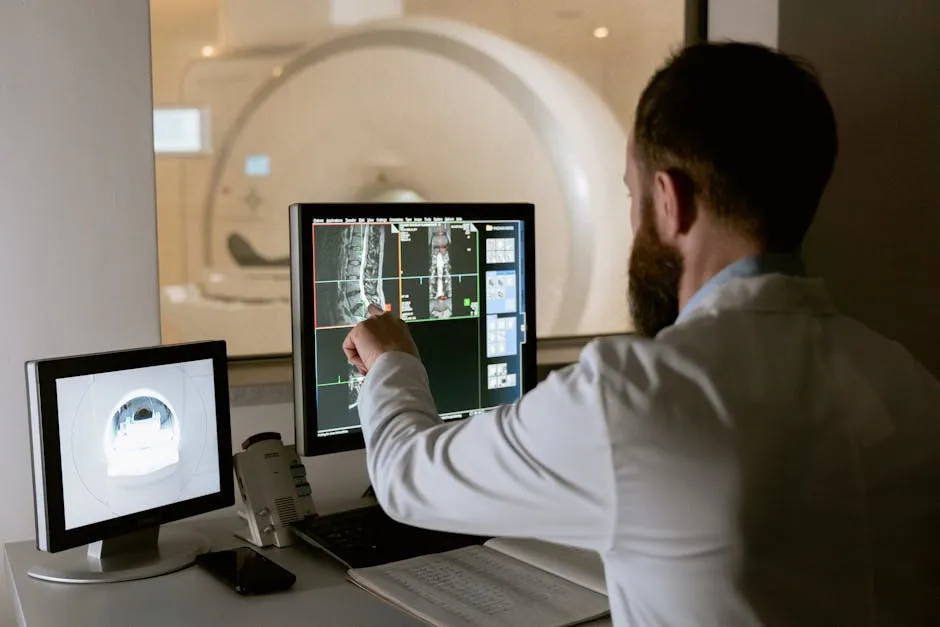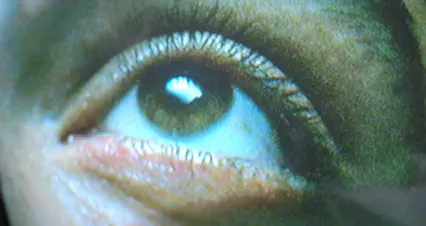
Why Are My Eyes Yellow? Understanding the Causes and Treatments
Why Are My Eyes Yellow? Understanding the Causes and Treatments
Introduction
Yellowing eyes, known as jaundice, can signal health issues. If you notice this change, it’s important to understand the cause. Identifying the underlying problem and seeking medical help is crucial for your well-being.
Speaking of health, staying prepared is key! You never know when you might need a First Aid Kit handy. From minor scrapes to unexpected mishaps, it’s always wise to be prepared!
Summary and Overview
Yellowing of the eyes indicates the presence of jaundice, a condition resulting from elevated bilirubin levels in the blood. This yellow tint can accompany various medical concerns. Common conditions linked to jaundice include liver diseases, bile duct obstructions, and hemolytic anemia. Symptoms often include yellow skin, dark urine, and pale stools. Ignoring jaundice can lead to serious complications, making medical evaluation essential. Early diagnosis enables timely treatment, addressing both the jaundice and its root causes effectively.
Causes of Yellowing Eyes
Jaundice Explained
Jaundice is a condition that leads to yellowing of the skin and eyes. It occurs when bilirubin builds up in the bloodstream. Bilirubin is a yellow substance created when red blood cells break down. Under normal circumstances, the liver processes bilirubin, allowing it to be expelled from the body. However, if the liver isn’t functioning properly, bilirubin accumulates, causing the yellow discoloration.
Several conditions can lead to hyperbilirubinemia, the medical term for elevated bilirubin levels. These include liver diseases, bile duct obstructions, and hemolytic anemia. When the liver is damaged, it struggles to metabolize bilirubin. This buildup can affect not just the skin, but also the whites of your eyes, making prompt medical attention vital.

Liver Diseases
Liver-related conditions are significant contributors to yellowing eyes. Hepatitis, a viral infection, can inflame the liver and disrupt its ability to filter bilirubin. There are three main types of hepatitis: A, B, and C. Hepatitis A is often contracted through contaminated food or water, while B and C are usually spread through blood or bodily fluids.
Speaking of liver health, consider incorporating a Liver Health Supplement into your daily routine. A healthy liver is essential for overall well-being, and supplements can provide the support it needs!
Alcoholic liver disease can also cause jaundice. Chronic alcohol consumption leads to liver inflammation, ultimately damaging liver cells. Nonalcoholic fatty liver disease (NAFLD) is another condition where fat builds up in the liver, potentially causing jaundice. This spectrum of liver issues highlights the importance of maintaining liver health and seeking medical advice if symptoms arise.

Hemolytic Anemia
Hemolytic anemia is a condition that accelerates the breakdown of red blood cells. This rapid destruction leads to increased bilirubin production, which can cause yellowing of the eyes. Several types of hemolytic anemia exist, including autoimmune hemolytic anemia and hereditary spherocytosis.
In autoimmune hemolytic anemia, the immune system mistakenly attacks healthy red blood cells. Symptoms often include fatigue, paleness, and, of course, jaundice. Other types may arise from infections, certain medications, or genetic factors. Recognizing the signs early is crucial, as untreated hemolytic anemia can lead to severe complications affecting overall health.

Bile Duct Obstruction
Bile duct obstruction can lead to yellowing of the eyes. This occurs when bile, which helps digest fats, cannot flow properly. Common causes include gallstones, tumors, or strictures in the bile ducts. Gallstones, formed from cholesterol, can block the duct, preventing bile from reaching the intestine.
And while we’re on the topic of health, how about ensuring you’re prepared for those unexpected moments with a Digital Thermometer? It’s a handy tool to have when you need to monitor your health!
Tumors, whether benign or malignant, can also obstruct bile flow. When bile accumulates, bilirubin levels in the blood rise, causing yellow discoloration of the skin and eyes. Diagnosis typically involves imaging tests like ultrasounds or CT scans to identify blockages.
Treatment options vary based on the obstruction’s cause. Surgery may be necessary to remove gallstones or tumors. In some cases, medications can help manage symptoms. Prompt treatment is crucial to restore bile flow and prevent complications.

Eye Conditions
Eye conditions can also cause yellowing of the sclera, the white part of your eyes. One such condition is subconjunctival hemorrhage. This occurs when small blood vessels in the eye burst, leading to a bright red or yellowish appearance. Common causes include trauma, excessive coughing, or heavy lifting.
Symptoms usually include a noticeable red spot on the eye. Over time, the color changes from red to yellow as the body reabsorbs the blood. Most cases resolve without treatment, though artificial tears can relieve discomfort. If both eyes show yellowing, it’s essential to consult a healthcare professional for evaluation.

Infections
Infections like leptospirosis can also result in jaundice and yellowing of the eyes. Leptospirosis is a bacterial infection often linked to contaminated water. Symptoms may include fever, headache, muscle pain, and gastrointestinal issues.
If left untreated, leptospirosis can lead to severe complications, including liver damage, which can cause jaundice. Treatment typically involves antibiotics, such as Doxycycline or Azithromycin. It’s essential to seek medical attention early to avoid long-term health issues and ensure a swift recovery.
Moreover, chronic infections can also lead to complications that result in jaundice. If you find yourself frequently battling infections, it may be worth exploring the underlying causes. Why do I keep getting yeast infections could be a relevant topic to consider.
Understanding the reasons behind recurrent infections can be crucial for your health. Why do I keep getting yeast infections provides insights that may help.

Medications
Certain medications can cause yellowing of the eyes, often due to liver damage. Popular drugs linked to jaundice include Acetaminophen, Statins, and some antifungals. These medications may lead to liver injury, disrupting bilirubin processing. When the liver struggles to clear bilirubin, it accumulates in the bloodstream, causing a yellow tint in your eyes and skin.
For example, high doses of acetaminophen can overwhelm the liver. This overload can lead to inflammation and, ultimately, jaundice. Similarly, statins, used to lower cholesterol, may occasionally impair liver function in sensitive individuals.
It’s essential to consult your doctor about all medications, including over-the-counter drugs. Discussing potential side effects can help prevent serious health issues. Always prioritize communication with your healthcare provider to ensure safe medication use.

Neonatal Jaundice
Neonatal jaundice is common, affecting nearly 60% of newborns. It arises when an immature liver cannot effectively process bilirubin, a yellow substance from red blood cell breakdown. There are several types, including physiological jaundice, which usually resolves within the first week.
Breastfeeding jaundice may occur if a baby does not receive enough milk. In these cases, bilirubin levels can rise, but the issue often resolves with proper feeding.
More serious types, like blood incompatibility jaundice, require medical intervention. Monitoring is crucial during the first days of life. If a newborn shows signs of jaundice, such as yellow skin or eyes, seeking medical advice is essential for appropriate treatment.

Treatment Options for Yellow Eyes
Medical Treatments
Treating yellow eyes requires addressing the underlying cause. For instance, in cases of liver disease, doctors may prescribe antiviral medications or lifestyle changes. These adjustments can significantly improve liver function and reduce bilirubin levels.
Hemolytic anemia treatment varies depending on severity. Options may include corticosteroids or blood transfusions to manage symptoms and restore healthy red blood cell counts.
If bile duct obstruction causes jaundice, surgical interventions may be necessary. Procedures can remove blockages, restoring normal bile flow. Each treatment plan is tailored to the individual’s needs, highlighting the importance of professional medical evaluation.

Lifestyle Changes
Supporting your liver health can help prevent yellowing eyes. One of the most effective ways is through a healthy diet. Focus on eating fresh fruits, vegetables, whole grains, and lean proteins. These foods provide essential nutrients that support liver function and overall well-being. Consider adding Organic Green Tea to your routine for a healthy antioxidant boost!
Staying hydrated is equally important. Drinking plenty of water helps your liver flush out toxins and maintain optimal performance. Aim for at least eight glasses a day. If you’re active or live in a hot climate, you may need even more.
Weight management also plays a crucial role. Maintaining a healthy weight reduces the risk of nonalcoholic fatty liver disease, a condition linked to jaundice. Lastly, avoid alcohol and harmful substances. These can significantly damage your liver over time, leading to serious health issues.
Implementing these lifestyle changes can make a positive impact on your liver health and overall vitality. You may also want to consider using a Yoga Mat to incorporate some gentle exercise into your routine!

When to Seek Medical Attention
If you notice yellowing of your eyes, it’s vital to consult a healthcare provider promptly. Certain symptoms warrant immediate medical evaluation. These include severe abdominal pain, fever, or unexpected weight loss. Additionally, if you experience dark urine or pale stools alongside yellow eyes, seek help quickly.
Early diagnosis is crucial for effective treatment. Delaying medical attention can lead to complications, including liver damage or other serious health conditions. Recognizing the seriousness of yellowing eyes can help prevent further health issues down the line.

Conclusion
Recognizing yellowing eyes as a health concern is essential. This symptom can indicate various underlying issues, often relating to liver function. Therefore, seeking medical advice is crucial to identify the cause and receive appropriate treatment. Early intervention can lead to better outcomes, ensuring your health stays on track. Don’t hesitate to consult a healthcare professional if you notice any changes in your eye color. Your well-being matters!
Please let us know what you think about our content by leaving a comment down below!
Thank you for reading till here 🙂
All images from Pexels




